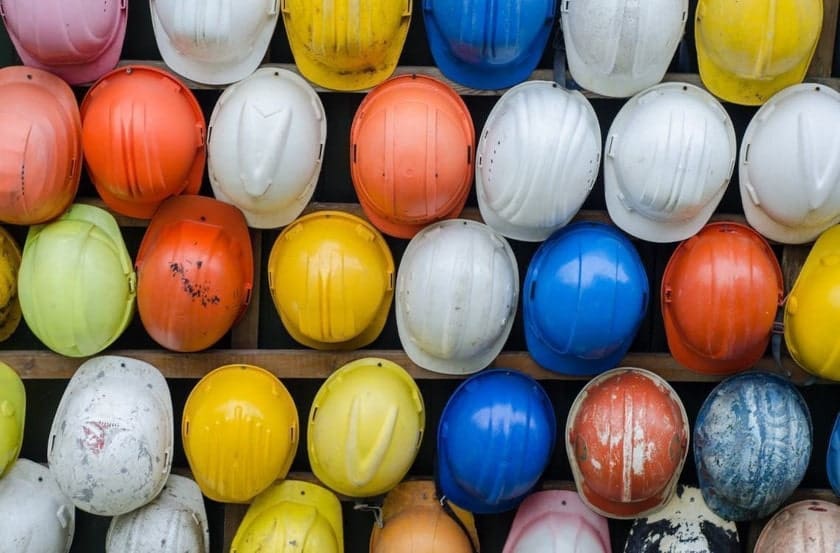Construction Safety In the News: 6 Stories You Need To Know

We’ve seen a recent flurry of construction news recently. It’s a mixture of long standing safety issues and emerging risks. Review these examples so you can adjust and improve your safety program. If you find your construction safety program is out of date, consider setting a calendar reminder to monitor industry news for safety incidents each quarter.
1. Fatal Accidents Remain a Major Challenge for the Construction Industry
Construction remains a dangerous field for workers. In 2015, Bureau of Labor Statistics reported that over nine hundred construction workers were killed. There is one small silver lining to the report. We know the most common causes of construction deaths, so we can adjust accordingly. Known as the “Focus Four,” the hazards include:
- Falls. Construction workers operate at heights. You don’t have to build a skyscraper to face this risk. Some fall accidents occur in home construction and other smaller scale properties.
- Struck by accident. Trucks, drills, cranes and other equipment cause problems on the construction site.
- Electrocution. There’s a reason electricians go through extensive training — death by electrocution is a major problem!
- Caught-between or caught-in accidents. These two related categories cover situations where workers may be trapped and have no way to escape.
2. Maintaining Construction Safety Standards During High Growth and Hiring
In 2017, construction activity increased, which meant that many more new workers were hired. In the scramble to hire staff amidst the construction labor shortage, companies have had to resort to hiring inexperienced workers. That means increased safety risk because training programs are not keeping up with the demand. For construction managers, maintaining high quality and safety standards despite high demand will remain a challenge going into next year.
As hiring becomes more difficult, employers with a poor safety track record will find hiring an even greater challenge. That’s the long term consequence of cutting corners on your construction safety program.
3. Hearing Loss Emerges as a Major Risk
In workplace safety, hearing loss is a new challenge to manage. Unlike other types of safety problems, hearing loss injuries are more difficult to detect. Despite the difficulty of detection, hearing loss lowers your quality of life, especially in construction.
CNN reports: “$242 million is spent on worker’s compensation annually for hearing loss disability, according to the Department of Labor.”
In fact, the Centers for Disease Control and Prevention estimate that millions of Americans suffer through “hazardous levels of occupational noise.” In the construction environment, occupational noise levels are a major challenge. To protect your workers today and in the future, address this construction safety risk.
4. New York Considers New Construction Safety Issues and Applies More Fines
In the aftermath of multiple construction deaths in New York, the city is considering new requirements. Specifically, the proposed legislation includes “a bill requiring that every construction worker on projects over three stories receive 59 hours of safety training,” according to the New York Times.
At this stage, it is unclear if this specific proposal will become law. From a risk management standpoint, construction firms in New York and other urban centers should take note of this development.
Whether or not the proposal becomes law, the government has taken action. As the NYT notes, “In 2016, the city’s Department of Buildings quadrupled fines for the most common safety lapses.” The fines include a new maximum fine of $25,000 for lacking a construction superintendent.
This development shows that construction managers are being held accountable for safety and supervision failures.
5. OSHA Starts Enforcing New Silica Regulations
Government authorities introduced new rules that impact the construction industry. The regulation was published in 2016 and the organization began enforcement of the standard for construction in September 2017.
The government now expects companies to offer medical exams, provide additional training and develop a written exposure control plan. Given that exposure to this substance has been linked to cancer, kidney disease and other lung diseases, managing silica exposure ought to be a priority.
6. Drones Pose New Construction Safety Risks
Drones — unmanned aircraft — are no longer solely under the control of the military. The Federal Aviation Authority (FAA) has reported over 50,000 registered commercial drones. However, there are relatively few standards or best practices governing drone use.
Drones are likely to become a more common construction technology, and can be incredibly useful. For example, you may consider using a drone to take photos of a construction site. What process and training will you use to make sure that the device is flown safely? If it runs out of power or encounters strong winds, drones can act in unpredictable ways.
Final Thoughts
What safety issues happened in your company or at your competitors’ projects this year? Learning from those incidents will help you to improve your construction safety program for many years to come.